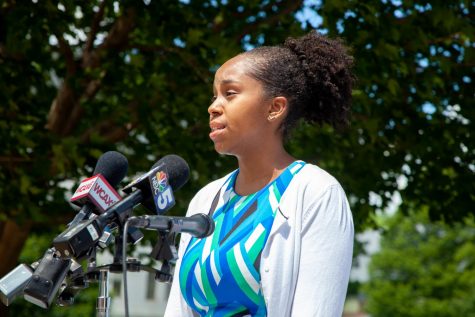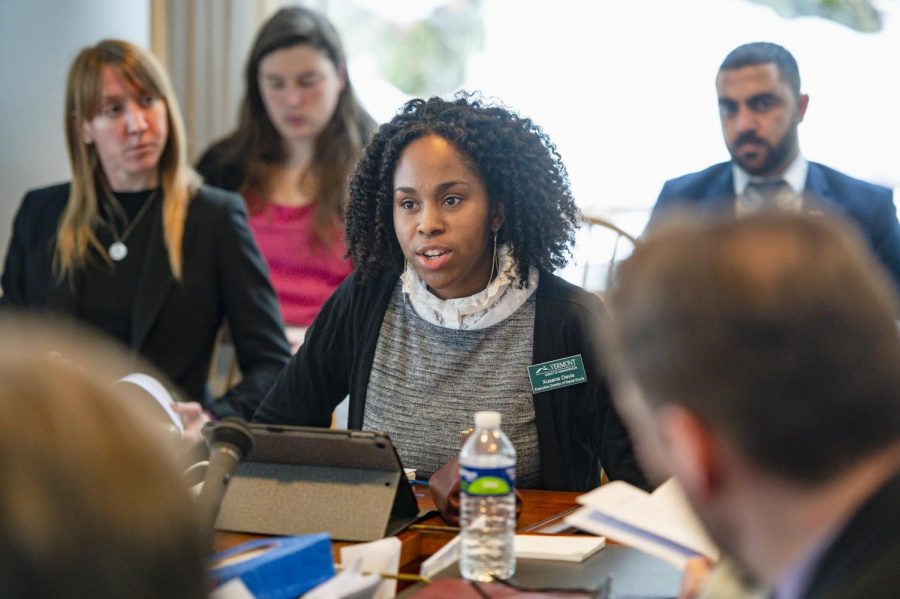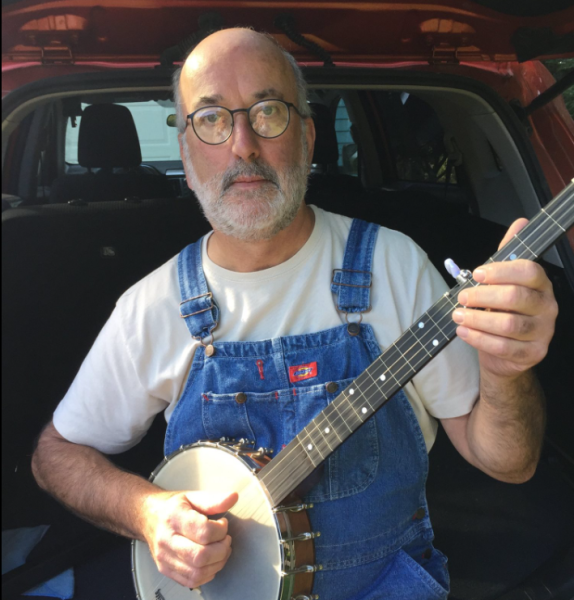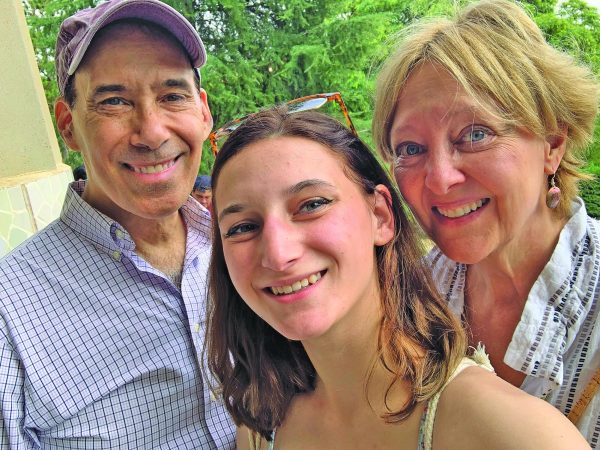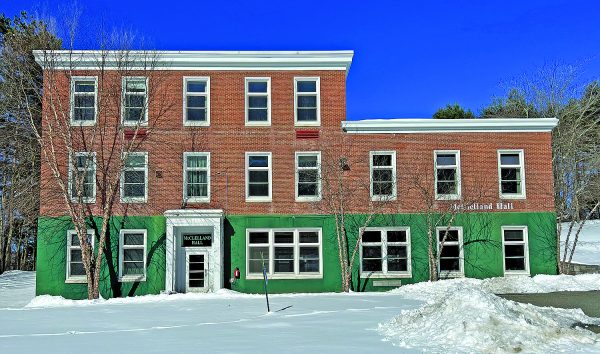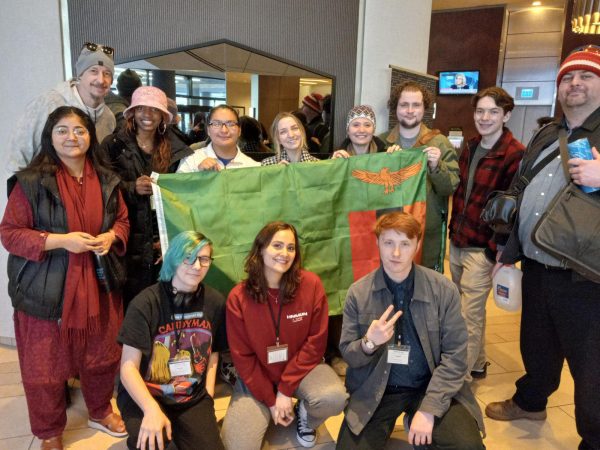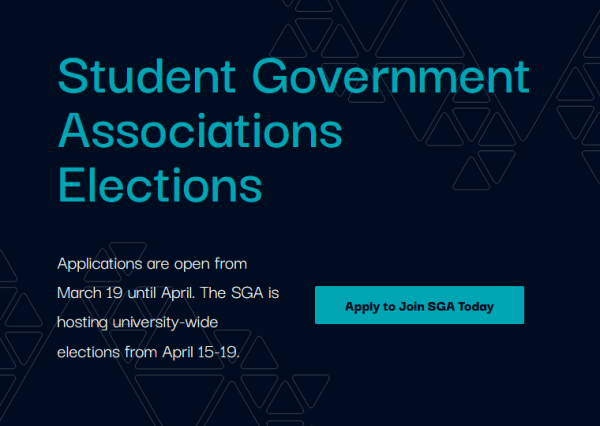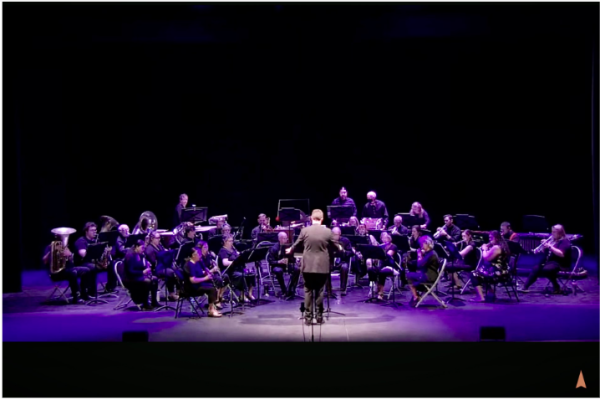Xusana Davis speaks to NVU about racial injustice in Vermont
Xusana Davis
What is a Vermonter? That is the question Vermont’s Executive Director of Racial Equity, Xusana Davis, posed at the outset of her recent talk at Northern Vermont University. How we choose to answer this question, her presentation seemed to say, will shape the future of the state.
Davis spoke in a live-streamed event on March 9 as part of the NVU 2021 spring lecture series. Appointed by Governor Phil Scott in 2019, Davis works with state agencies and departments to combat systemic racial disparities.
Davis’s lecture began with an outline of some of Vermont’s demographic trends and racial disparities. Vermont, Davis said, is the second oldest and the second whitest state in the nation, and it’s aging.
However, resident’s ages are not evenly distributed across races; white and Indigenous Vermonters have median ages in the 40s, while the median ages of all other people of color are in the 20s. This means that any given minor in the state is more likely to be a person of color than any given senior in the state, Davis said.
This, she said, begs the question: “is Vermont in a place that fairly and accurately represents us in all of our dimensions?”
Davis outlined some of the racial disparities in Vermont. African Americans are six times more likely to be arrested for misdemeanor possession of marijuana than white people. Indigenous adults in Vermont are more likely to be diagnosed with depression than whites. Vermonters of color have a homeownership rate of 48% compared to 72% for white people. And those are just a few of the statistics she presented.
Vermont’s economy would have been $420 million larger in 2015 if there had been no racial income gap. This, Davis said, shows that inequity is a collective harm, not just an issue for people of color.
“When you do right by vulnerable people, when you do right by people who have been marginalize and oppressed, you’re doing right by everybody,” she said. “Every single person in this state benefits from a better, larger and more robust state economy, and all we have to do is pay people fairly for their work across racial groups.”
These issues are structural, Davis Stressed, using the school as an analogy to drive home the point. Say the lights went out because somebody forgot to pay the power bill – that’s a systemic issue. And the administration telling everyone to go about their day using headlamps and flashlights to provide their own light would clearly be an inappropriate individualized solution to the problem.
The point being, that when we think about issues like housing insecurity, poverty, criminal justice, education disparities – the big issues – we need to have structural solutions, not just individual workarounds, she said.
The state has focused on a number of structural areas for reform. Davis said that this effort includes incorporating equity in strategic planning – setting goals and timelines, looking at hiring practices and retention strategies, among other areas.
It’s not simply enough to do new “cool” things on top of old, failed systems, Davis said. Rather, we must be willing to throw some of the old ways out to move forward. “It’s a combination of new, good policy and the bravery and the humility of undoing existing bad policy,” she said.
Speaking to the gathered students, Davis said that being in the halls of academia put them in a great position. “It is your job to think,” she said. “It is your job to make faces when you hear things that don’t sound quite right. Do that, but do it loud.”
“Nobody likes a lot of angry students, because angry students are powerful and annoying,” Davis said. “And you should be annoying. Be that. Because that is how change happens.”
“I go back to those charts from the beginning of the presentation about the demographics, and the median age of Vermonters, and you’re it. So step into that power, and own that, and be that, but do so in a way that’s informed. Know the history. Know what people have done and gone through before you came. Take that in stride, and then move it forward.”
She also spoke about xenophobic attitudes that occasionally surface in Vermont, particularly referencing the 2015 debate around adding a state motto in Latin – the language of the Romans – but which some commenters apparently mistook for being Latino. The ensuing anti-immigrant vitriol pushed the fact that xenophobia exists in Vermont out into the open.
As an illustration, Davis read a few online comments in response to the proposed motto: “It should read ‘go back to where you came from,’” said one person. And “Hell no! This is America, not Latin America. When in Rome do as the romans do,” wrote another.
“When people feel threatened in their nativism, when people think that their identities are subject to what they see as dilution, that is when… real feelings come out,” Davis said. “And so, this notion of this tolerant, welcoming, groovy, chill place gets disrupted when we see the reality behind people’s idea of what it means to represent or define Vermont.”
Davis suggested that a first step to tackling xenophobia in Vermont is to humble ourselves: to realize that Vermont is dependent on people from out of state and out of country. There are multiple Vermont schools, she said, that might not even exist now without an influx of students of color.
“If we want to keep things as they permanently were, we are going to get what we have always gotten. And if we want to join the rest of the nation and the rest of the world in advancing, then we have to let go of some of the rancorous, this toxic xenophobia, where we push people away,” Davis said.
“It really boils down to a certain humility that comes with saying that we like who we are, but we can’t survive without each other. We are proud to be Vermonters, but that doesn’t mean we have to put down other people.”
Multiple students asked how to push for change in the education system, particularly higher ed, but K-12 as well.
Beyond specific communication strategies, Davis said that supplementation was important – reading the kind of material that might not be on the syllabus. While saying that, she acknowledged it was an individual workaround for a systemic problem, but she said there must be a two-track approach. “It’s a combination of that individual pursuit, and that chipping away at the lies,” she said.
Regarding changing curricula in the K-12 education setting, Davis said that it’s extremely important that the administration has the back of teachers who want to change how they teach history, for instance, to reflect a broader, more accurate coalition of perspectives.
She also stressed the importance of using evidence-based and well-regarded techniques. “There are some folks who are just going to say no always, because they don’t want to hear bad things about history, and there are some folks who are going to say ‘yeah, sure’ but they are going to use really bad curricula,” Davis said. “Sometime these things are being taught extremely poorly and being able to draw that distinction for teachers and administrators is really key.”
“At the end of the day, so much of this pressure has to come from the students and parents themselves,” Davis added.
Since 2016, there has been an explosion in the number of equity-centered groups in the state. Paralleling this state work is the work of multiple committees in the Vermont State Colleges System.
“It was such an honor to have Xusana on campus,” said Hannah Miller, an assistant professor of education at NVU-Johnson and the contact for the Johnson Diversity and Inclusion Task Force. “She is an amazing leader in Vermont, and it was a pleasure and honor to listen to her ideas and vision for this work – to see her presentation – and also to hear her perspective on our unique and local challenges.”
Referencing the questions from students about how to confront teachers, Miller said, “I think it’s reflective of some of the problems that we had that those questions came out, and we should take those seriously and really think critically about how we can respond to that problem. We have to own that as faculty. It should be not the role of the student to point out inequities in the curriculum or the system. That’s not their job. That’s our job as faculty.”
According to Miller, there is a unique opportunity in the likely unification of the Vermont Technical College, Castleton, and NVU. “We have an opportunity to prioritize diversity and inclusion in all of these transitional changes,” she said. “We will be developing new policies, we will be rewriting programs, we will be reorganizing departments and systems, and it’s really important that we use that opportunity to critically reflect on what was and to critically analyze and plan how we can make it better and more equitable.”
Miller suggested that students who would like to get involved with racial justice work can join the Lyndon FAIR or the Johnson Diversity and Inclusion Task Force.
Students could also have an impact, Miller said, by sharing experiences with trusted faculty or staff. However, she said, there is also a broader version of this underway in the form of a campus climate assessment.
“If there is a larger assessment tool, we could gather more data and use data to make informed decisions about what needs to change on campus,” Miller said. “So that the decisions being made aren’t just from well-intentioned white people who think that there needs to be change, but that they are grounded and rooted in the data of the lived experience of people of the global majority in the Vermont State College System.”
